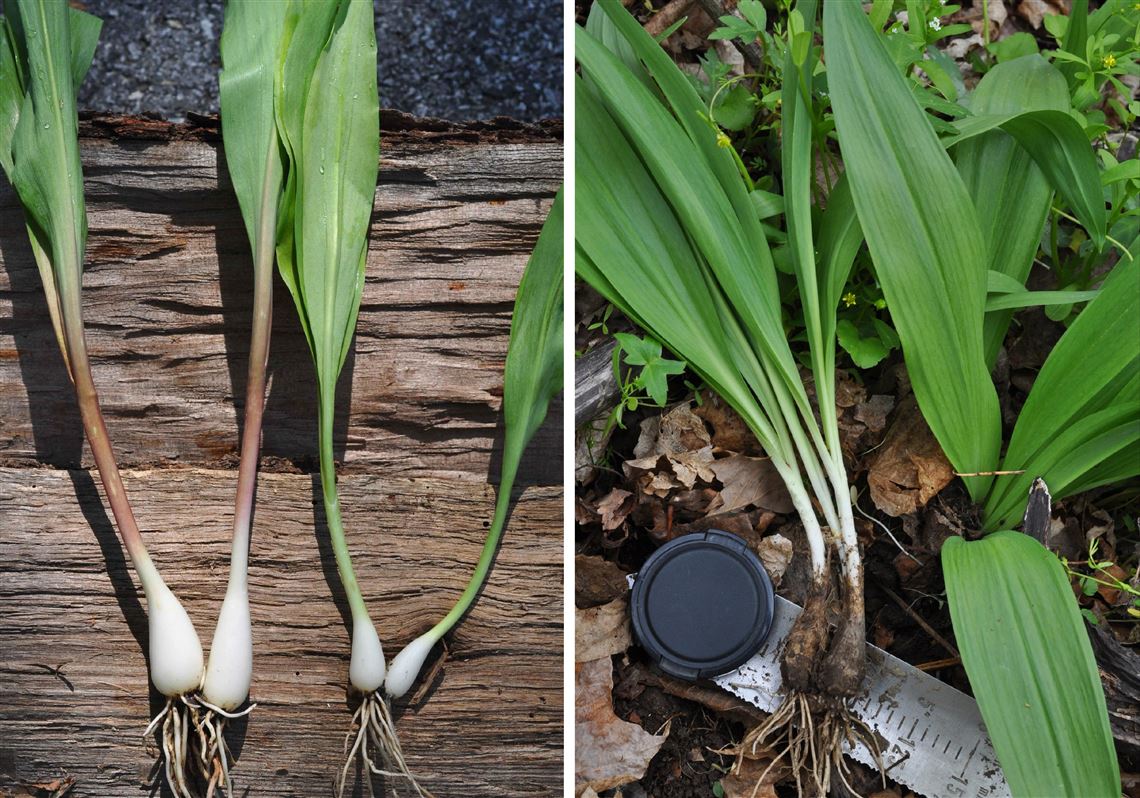Under the noses of walkers, runners and bikers in local parks, there is a new type of the delectable garlicky onions known as ramps.
It’s not the common wide-leaved ramp species, Allium tricoccum, that is the popular wild leek sought by foragers in the region.
Botanists have discovered a new species of ramps for the state – Allium burdickii – in 15 sites including several Allegheny County parks and other protected green space in Washington, Westmoreland and Greene counties.
The findings were published July 26 in the Natural Areas Journal.
:
Allium burdickii, known as the narrow-leaved wild leek, is found in the upper Midwest south to Tennessee and north to the Great Lakes.
Penn State researchers, tipped off by botanists at the Western Pennsylvania Conservancy, discovered the smaller, “stinkier” ramp species during the pandemic.
A. Burdickii looks like a flat blade of grass that flowers and fruits at a different time than wide-leaved ramp, which sprouts several wide, glossy light green leaves in early spring.
“All of the science points to the fact it’s been here all the while, right under our nose,” said Eric Burkhart, an associate teaching professor at Penn State College of Agricultural Sciences and program director of Appalachian Botany and Ethnobotany.
“I just think it’s pretty cool that we are still making new discoveries about our biological heritage. Each and every year a new species is found in the state,” he said. “Even in our public parks outside of Pittsburgh, we are finding new species.”
Weird-looking ramp
How can this be? Much of Western Pennsylvania’s natural vegetation, except on the steepest of hills, has been shorn and mowed over the last centuries.
Sarah Nilson, an assistant professor of biology at Penn State Beaver, received reports from the Western Pennsylvania Conservancy and other botanists of a weird-looking ramp. She first found it in Washington County, then in Allegheny County parks and other protected green spaces.
“A lot of time we were finding them in isolated hollows,” she said. “With our topography, we have hills that might have been logged but not developed. You can’t put a subdivision on a steep hill that even fit people struggle to walk on.”
Although the sites are known to botanists, the ramps look like sedges and may have been mistaken for other plants, Nilson said.
The narrow-leaved ramps can tolerate drier areas than wide-leaved ramps. They’re deep-rooted and more difficult to pull, she said. They’re often seen near sugar maples.
“If you have a lot of sugar maples maybe you’ll find it,” she said. “You’re not going to find it in the middle of your lawn.”
In the wild
Parks, whether large or small, are not developed and the greenery can be wilder.
“We believe it was widespread in forest lands not heavily disturbed like an old coal site,” Burkhart said.
“Maybe it’s all over the place, or just in the Pittsburgh area. We might find it’s in decline in small areas.”
The researchers just don’t know.
The slow-growing forest plant produces leaves in the spring before the tree canopy develops. Many of its leaves die back in the summer.
It is very small, reaching up to 12 inches with a stalk and flower, but more typically 6-8 inches tall.
“This time of year, if not over-browsed by deer, they are tucked under shrubs and ferns,” Burkhart said.
Photosynthesis occurs in March to mid-May. “That period of photosynthesis is the window when people harvest and that’s when we do our surveys.”
Burkhart and Nilson are working with the foraging community and hope to identify more patches of the narrow-leaved ramp in the state. They want to refrain from harvesting it until researchers know how much is out there.
“Foragers need to be aware and responsible,” he said. “It occurs in a limited part of the state.”
Different taste
Do foragers really want to make, say, narrow-leaved ramp butter? A. burdickii has a strong skunk odor and a milder taste than common ramps, Burkhart said.
“I’m not saying it’s not edible or people won’t appreciate it,” he said. “It’s just different.”
Penn State food scientists are studying the new species’ chemicals and compounds. Common ramps have onion and garlic compounds that give them their unique flavor.
Nilson is studying the genetics of the species, comparing it to the wide-leaved ramp.
Researchers haven’t determined how many species of ramp exist; some may be variations of the same species, she said. The distinction is important for preservation and to set guidelines for foragers for years to come.
“By understanding the genetics, we can help protect the plant,” Nilson said.
Foragers’ help
Burkhart said researchers want to work with foragers and other botanists to see how common or uncommon narrow-leaved ramps are. They are not opposed to harvesting.
“It’s valuable for people to interact with nature and collect plants for their food,” he said.
The cultural tradition of foraging for wild ramps needs to continue, Burkhart said.
“We have to recognize people for foraging and not shame them, but educate them, and to make foraging sustainable.”
To learn more about Allium burdickii, visit Burkhart’s Penn State faculty page at ecosystems.psu.edu or Pennsylvania Botany and Ethnobotany on Instagram.
Mary Ann Thomas: mthomas@post-gazette.com.
First Published: August 29, 2023, 9:30 a.m.
Updated: August 29, 2023, 6:34 p.m.















